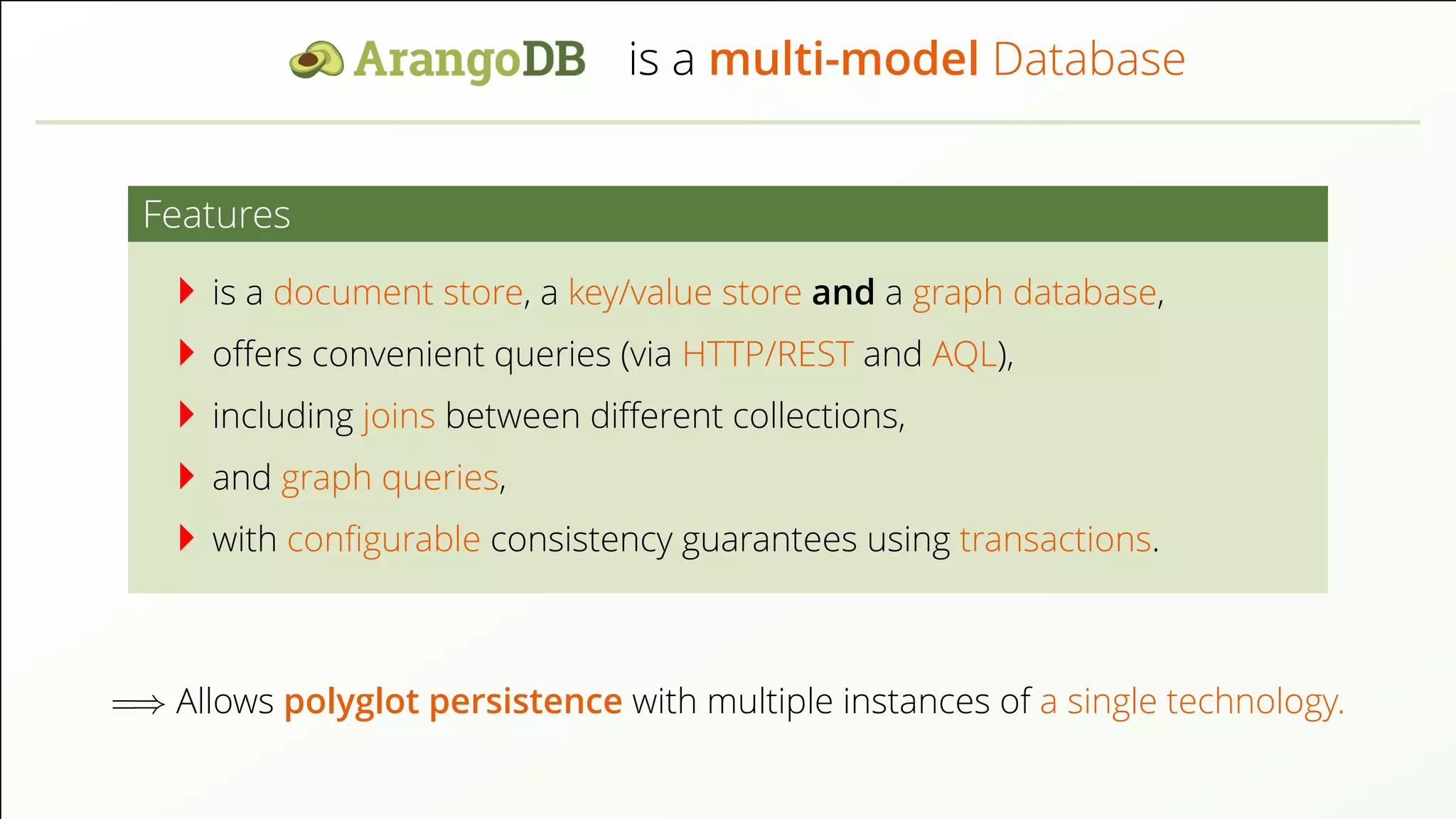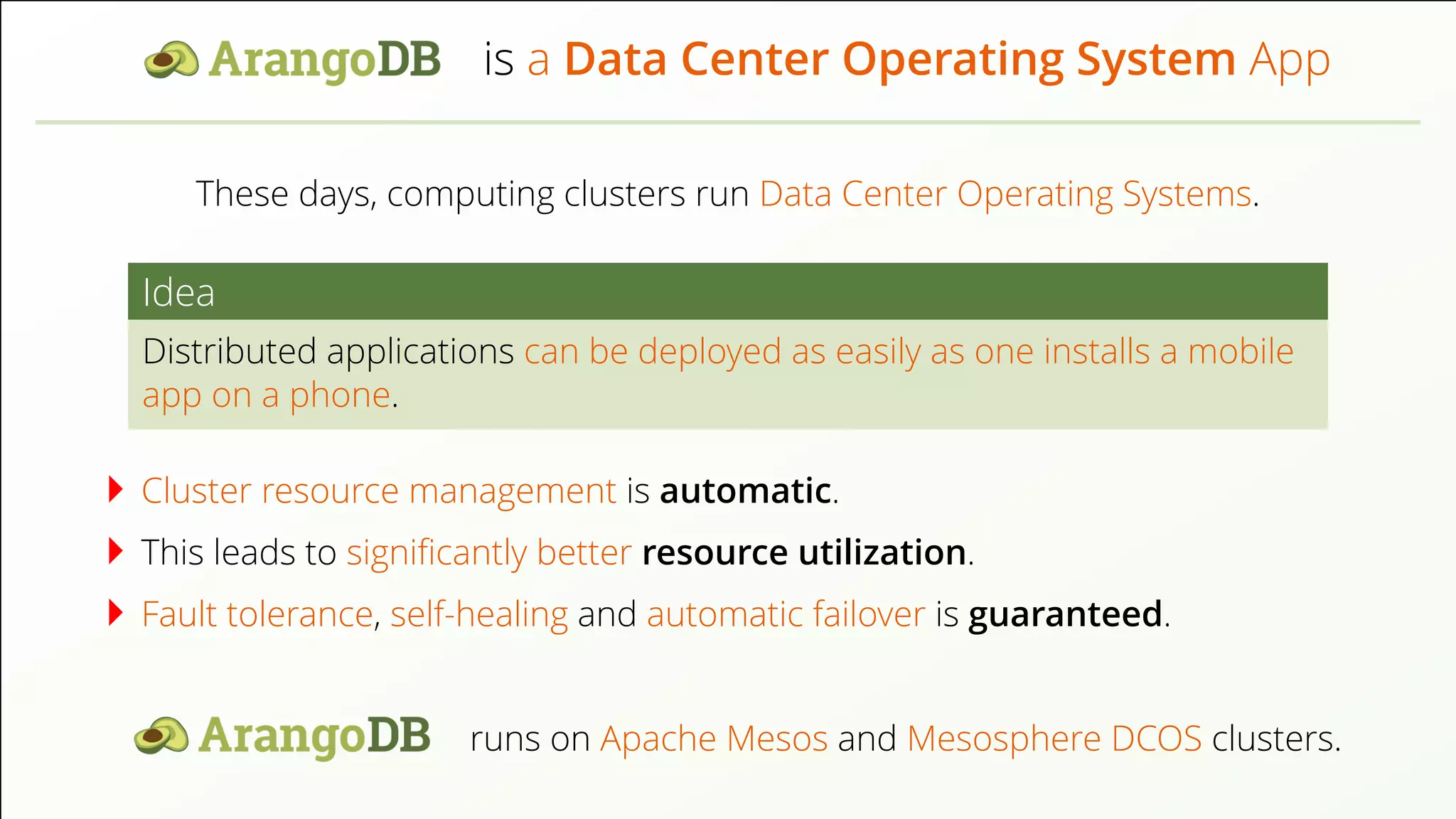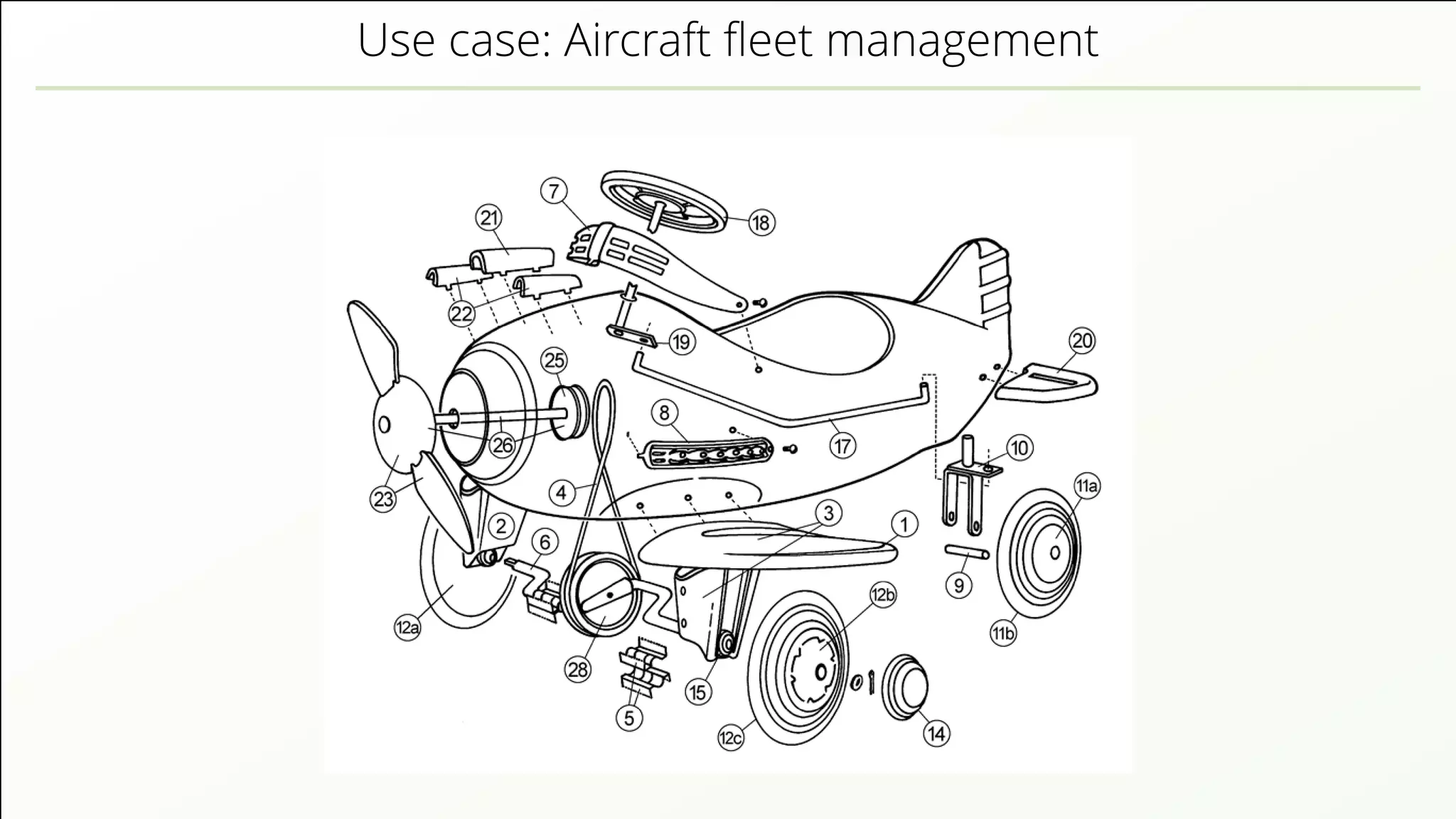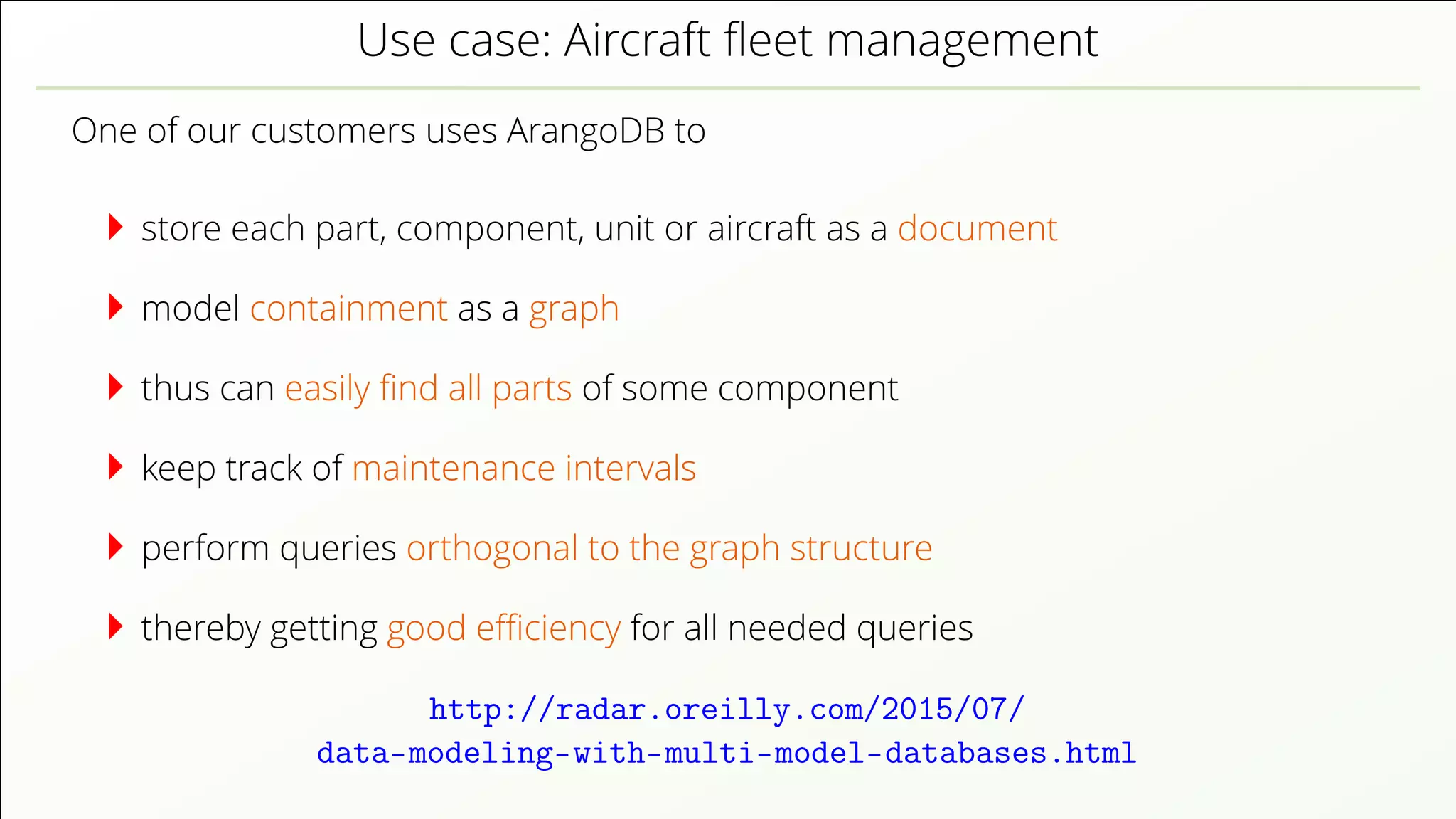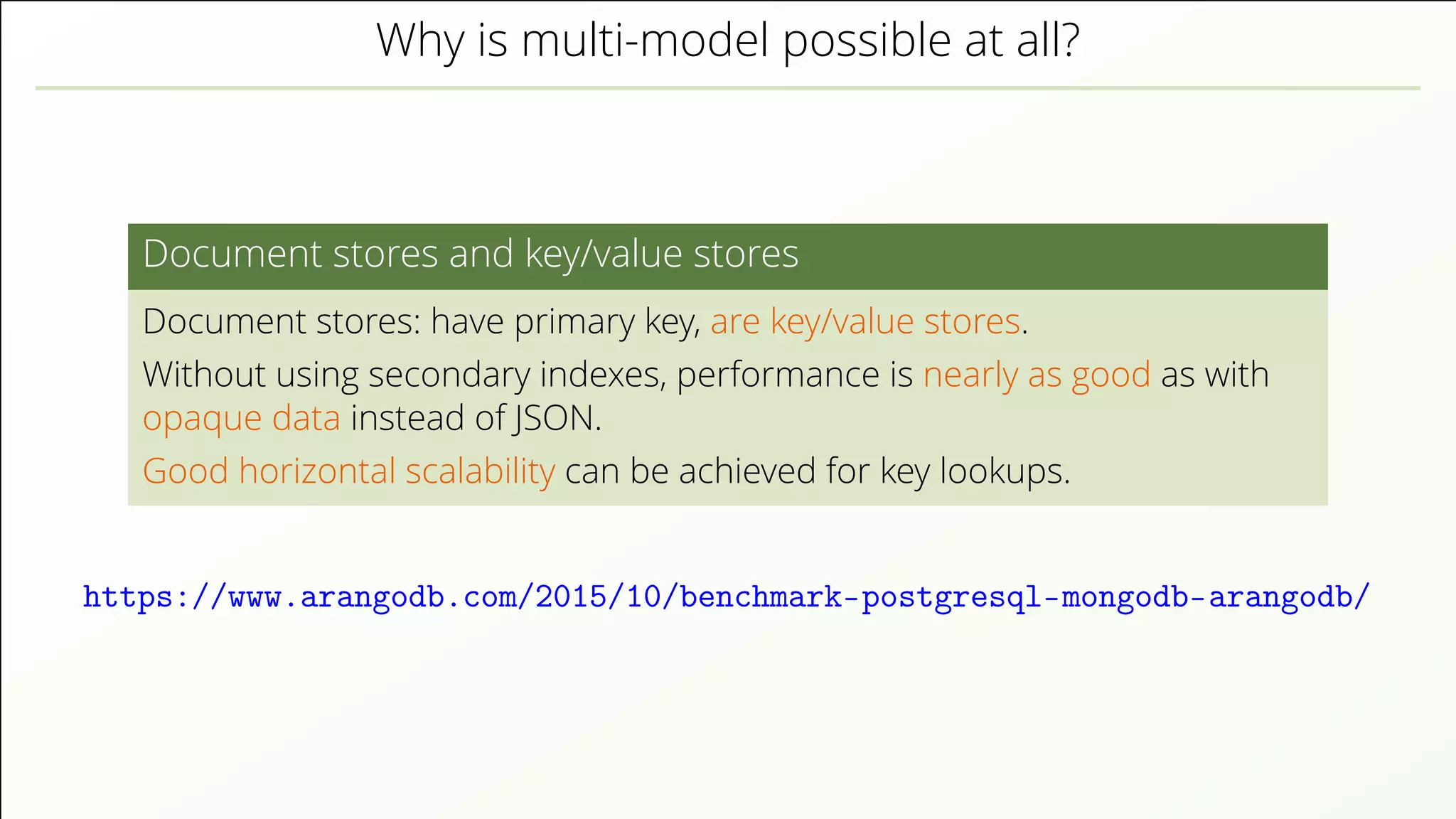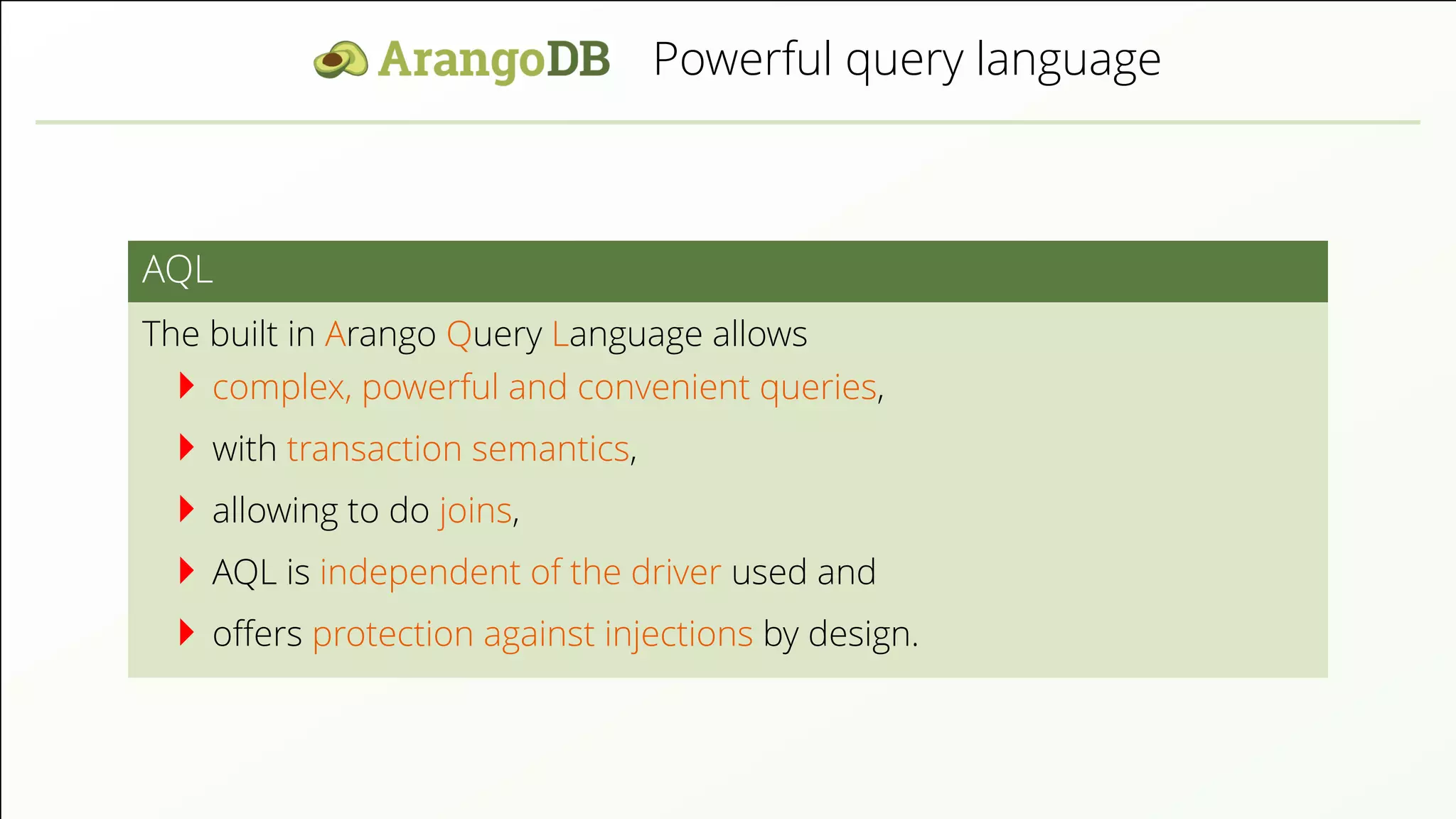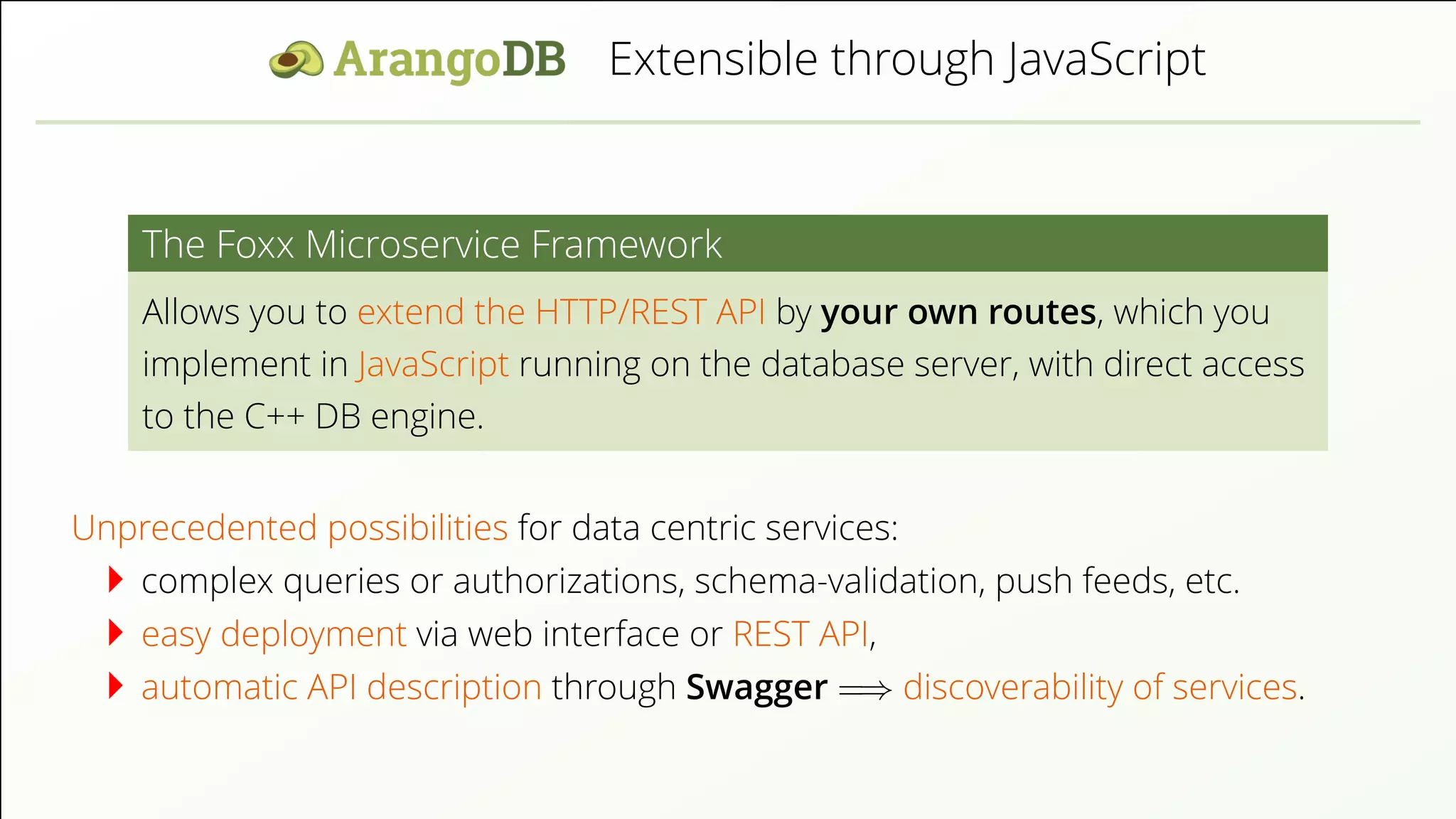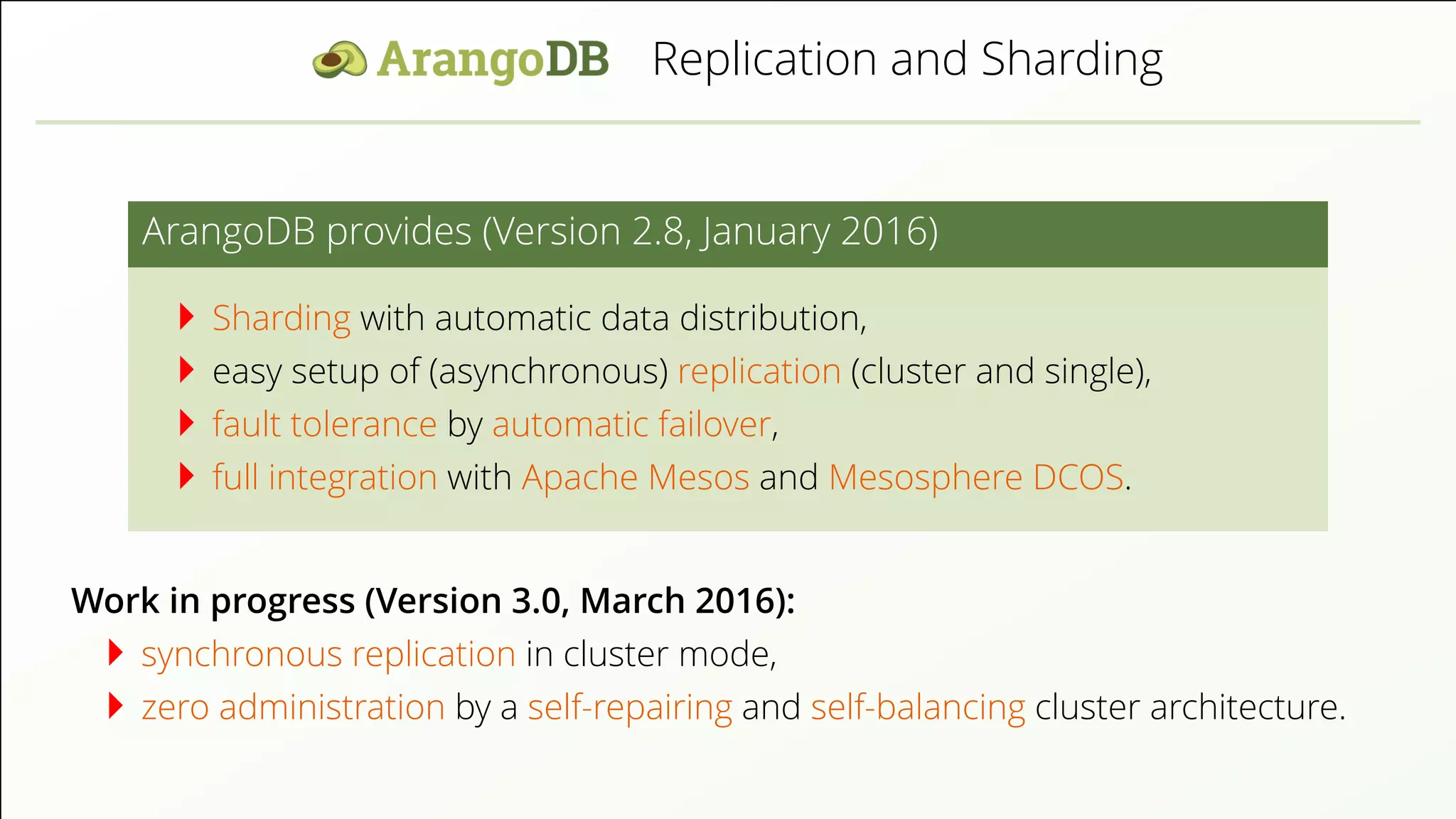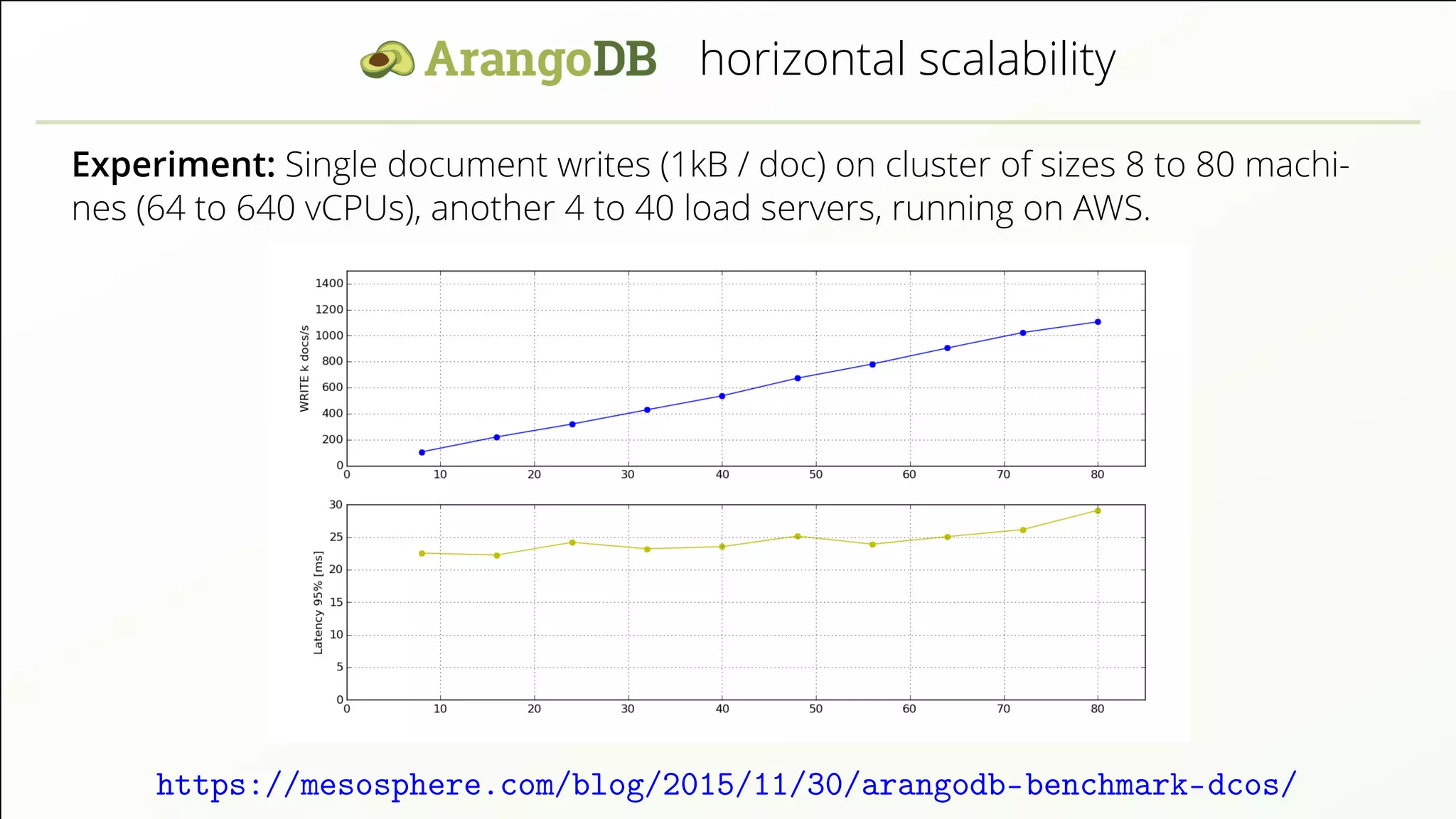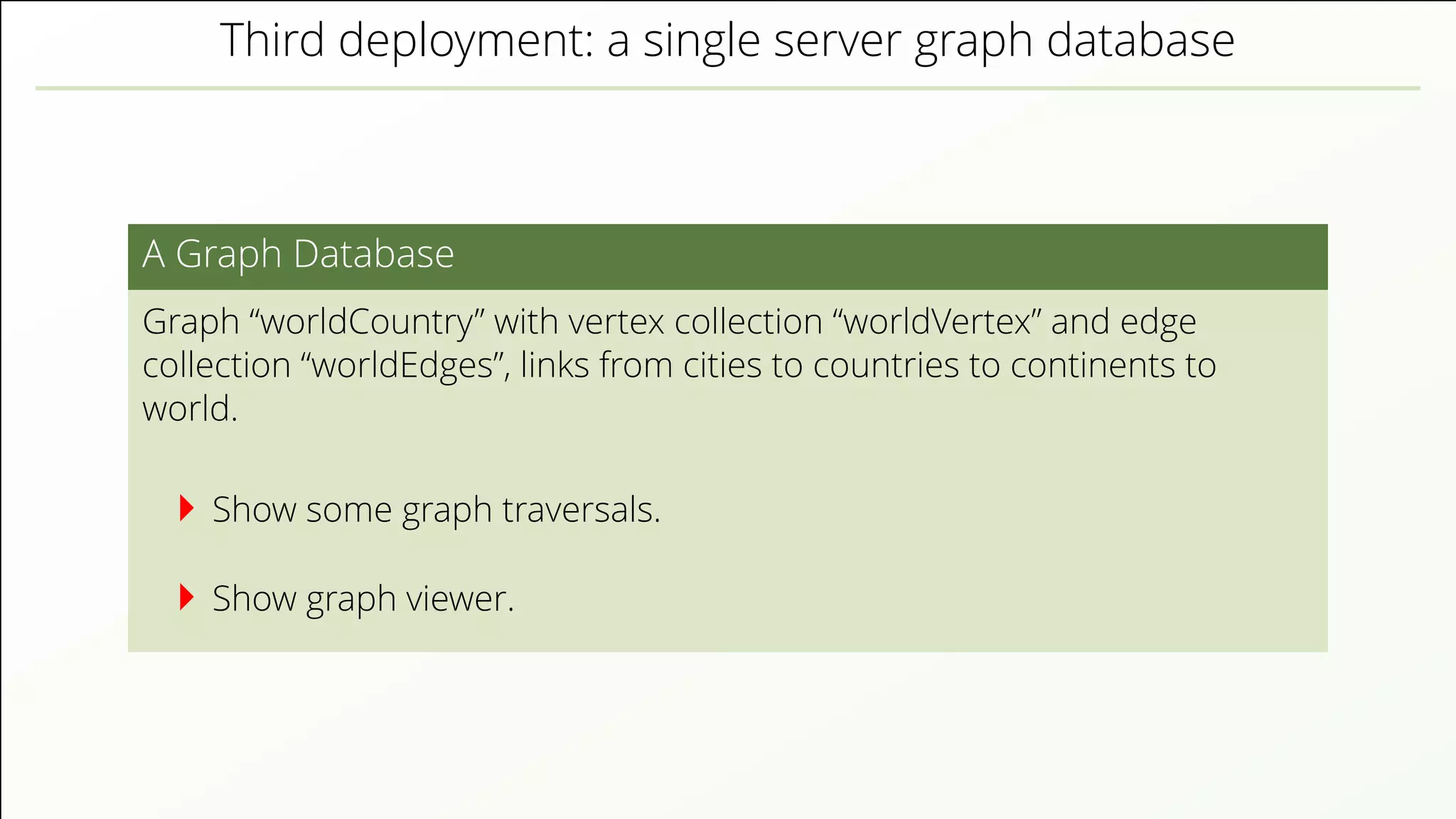ArangoDB is a multi-model database that can be used as a document store, key-value store, and graph database. It offers queries across different data models using its query language AQL. Developers can also extend its functionality through JavaScript modules. ArangoDB can run on Apache Mesos clusters to provide automatic scaling and fault tolerance. It aims to provide polyglot persistence through a single database technology.


